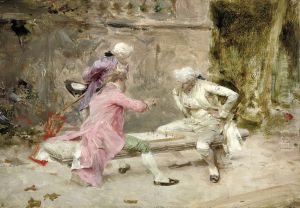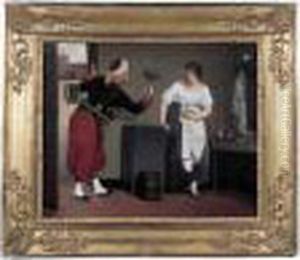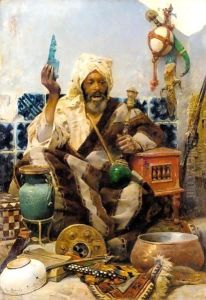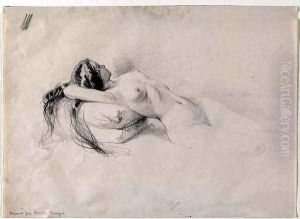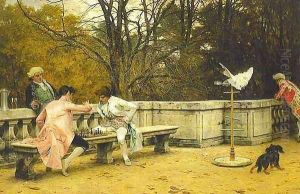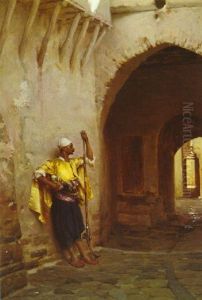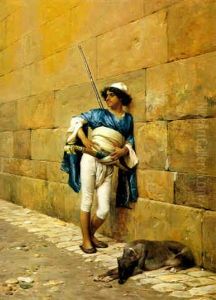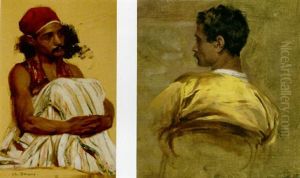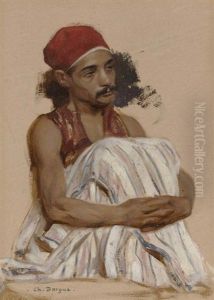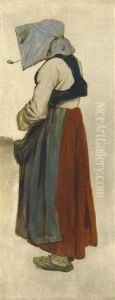Charles Bargue Paintings
Charles Bargue was a French artist and lithographer, known for his drawing course titled 'Cours de dessin', which became a foundational work in academic art education. Bargue was born in either 1826 or 1827, with the exact date being uncertain. He developed an interest in art at a young age and went on to study with prominent artists of the time.
Bargue is most notably associated with the academic art movement, which emphasized traditional forms and techniques. He worked closely with Jean-Léon Gérôme, a renowned French painter and teacher, who was a significant influence on his work and career. Together, they developed the 'Cours de dessin', first published in the 1860s, which was later adopted by art schools across Europe and North America. The course was composed of lithographs that served as studies and was divided into three parts: drawing after casts, after Bargue’s own drawings of masterworks, and after nature.
Although Bargue is not as well-known for his paintings, he did produce a body of work that included genre scenes, portraits, and Orientalist subjects reflecting the 19th-century European interest in Middle Eastern cultures. His work was exhibited at the Paris Salon, but it was his pedagogical contributions that had a lasting impact. The 'Cours de dessin' was used by many famous artists, including Vincent van Gogh, Pablo Picasso, and John Singer Sargent, as a means to develop their drawing skills.
Charles Bargue passed away in 1883, leaving behind a legacy primarily in the realm of art education. His drawing course continues to be respected and is still used in some traditional ateliers and art schools today. Despite his relative obscurity as an artist, Bargue's influence on the development of realist drawing techniques and academic art training persists, making him a significant figure in 19th-century art history.



